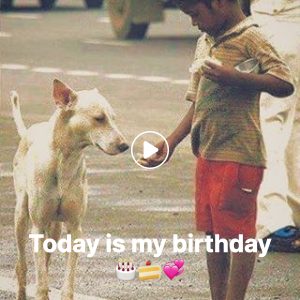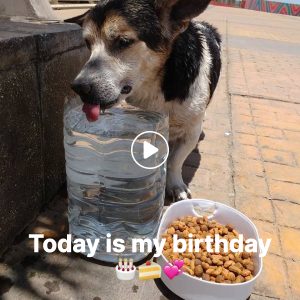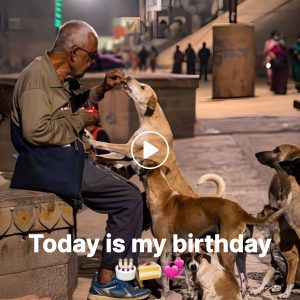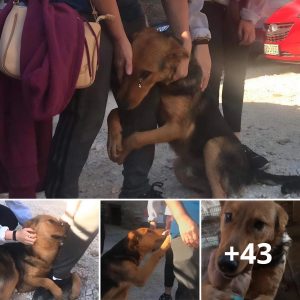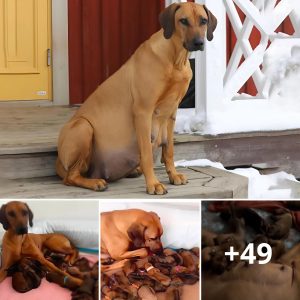The Journey of Panpan: From a Stray to a Beloved Companion
A few weeks ago, I heard about an injured stray dog living at the garbage station. Curious and concerned, I brought some food to check on him. What I saw broke my heart: a frail dog struggling to move, his body emaciated and his eyes filled with fear. He was so wary of humans that he preferred to sleep among the trash rather than approach people.

Maybe life had hurt him too many times before. Even when I left food nearby, he refused to come close. We had to step back a considerable distance before he dared inch forward to eat. His pitiful state stirred something in me, and I resolved to rescue him.
At first, it was a challenge. He didn’t trust us, and we couldn’t force him to come with us. Instead, we started visiting him daily, bringing food and trying to build a connection. Slowly, he began to recognize us, though he still kept his distance. One day, we found him lying quietly at the garbage site. As usual, I put food down and backed away, hoping he’d realize we meant no harm.

On the fourth day, we prepared a special chicken breast meal for him and mixed in some anti-inflammatory medicine to help with his visible injuries. However, when we arrived at the garbage site, he was gone. Panicked, we searched everywhere—under trash piles, near drainage ditches—but found no sign of him. We left his food and water in his usual spot, hoping he’d return.
The next day, he was still missing, and my worry grew. With the help of my aunt and grandmother, we searched the village and even reviewed surveillance footage. After hours of searching, my aunt finally found him tangled in grass by the roadside. His hind leg was wrapped tightly in vines, and he couldn’t move.
The scene was heartbreaking—signs of his struggle were etched into the ground. He had been trapped all night and was exposed to the sun all morning. With great difficulty, we freed him and placed him in a basket, though he was terrified, baring his teeth and whimpering. We brought him food and water, and once he was full, we carefully took him home.
We named him Panpan, symbolizing his newfound hope and the rescue that saved him. To celebrate, we even prepared a small cake and made wishes for his future. Panpan’s life was finally changing for the better.
Over the following days, Panpan began to open up. He wagged his tail, ate heartily, and even let me hand-feed him. Although his injuries made movement difficult, his appetite and spirit improved daily. On the seventh day, Panpan wagged his tail for the first time—a sign of trust and gratitude.
We took small steps to help him adapt to his new life. Panpan got a balanced diet of meat and vegetables, along with necessary medicine. We set up a comfortable bed for him and tried introducing him to a leash. Though initially scared, he allowed us to gently secure it. When he resisted walking with the leash, we decided to be patient and try again later.
Each day brought new progress. On the eleventh day, Panpan’s new bed arrived, and his meals included goat milk and calcium tablets to support his health. His once-skinny frame was beginning to fill out, and his trust in us grew stronger. He even started following me around the house, wagging his tail with excitement.
By the twelfth day, Panpan had transformed from a frightened stray into a cherished member of our family. We planned to take him to the vet to ensure he was on the right path to recovery. Watching him grow stronger and happier has been one of the most rewarding experiences of my life.
Panpan’s journey is a testament to the resilience of animals and the transformative power of love and care. He has gone from a scared, injured stray to a loving, trusting companion. His story reminds us that every life is worth saving, and with patience and kindness, even the most broken souls can heal.
